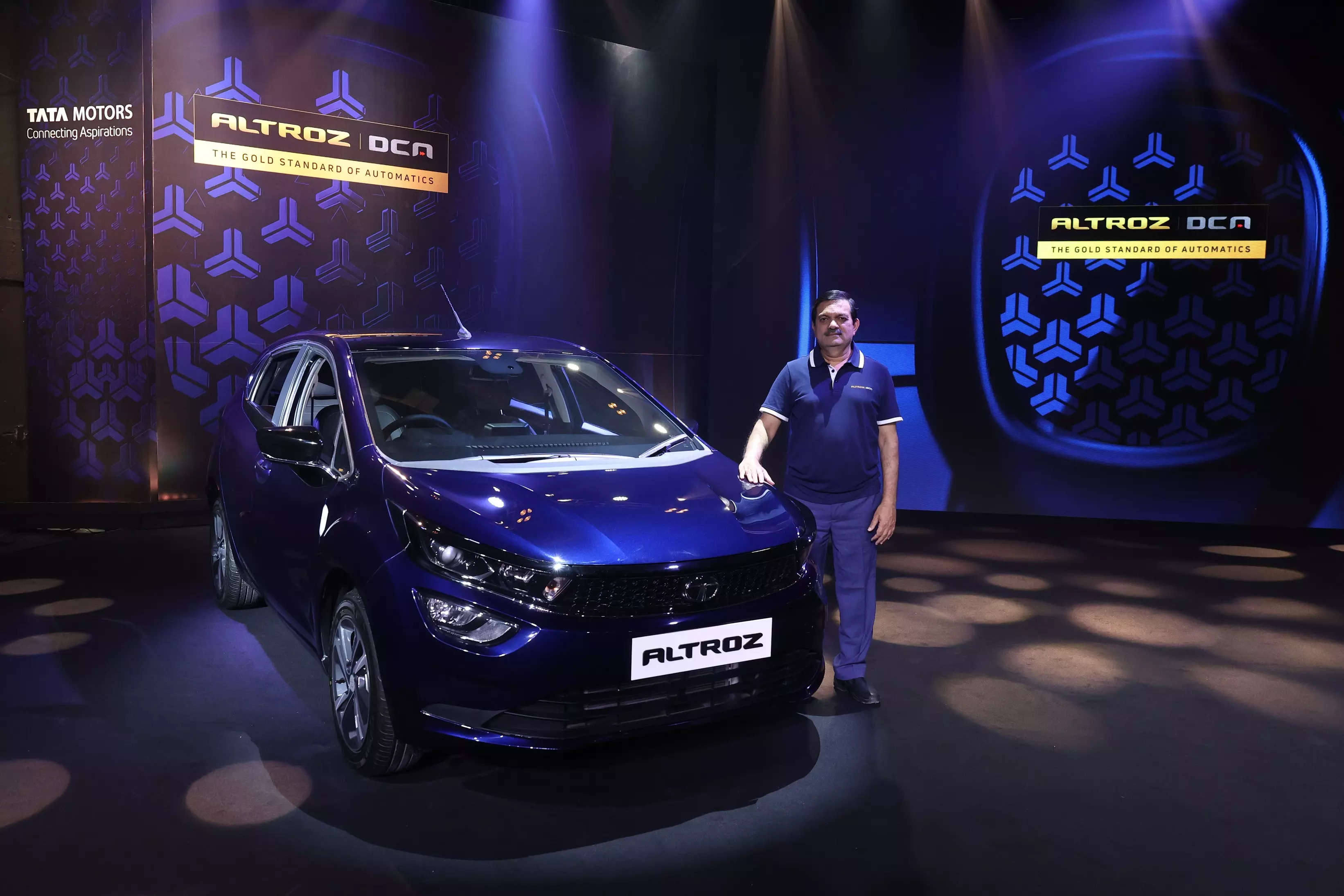
Tata Altroz, which entered the market two years ago, finally gets an automatic transmission. The Altroz DCA (Dual Clutch Automatic) is launched in a price range of INR 8,09,900 to 9,89,900 covering seven trims. A much-needed upgrade for Tata Motors, to tap the growing trend for automatics as well as to justify the ‘new forever’ promise of its passenger vehicle portfolio. Launched after around 3 years of development, the Altroz DCA costs over INR 1 lakh more than the variant with the naturally aspirated (NA) 1.2 litre engine, and about INR 60,000 more than the one with the petrol turbo-charged engine. The automatic transmission is available only with the NA engine, as 85% of the Altroz volumes comes from this engine option.
An automatic transmission is not new in the domestic passenger vehicle (PV) market. But Tata Motors has tapped technology to innovate Altroz automatic transmission. It has opted for dual clutch transmission, the more sophisticated of the automatic transmission options, but also one which is not considered to be suitable for the dusty Indian roads. What’s new in the Altroz DCA is the wet type clutch, as compared to the existing dry DCTs (Dual-clutch transmission) in the market.
The transmission unit also comes with a unique ‘active cooling’ technology that can monitor temperature up to 100 times a second, and automatically intervene to cool the units.

Explaining the technology, Mohan Savarkar, VP, Product Line, Tata Motors Passenger Vehicles, told ETAuto, “when you’re driving in a very hot weather, in a bumper- to- bumper traffic where you need frequent gear changes or when an inexperienced driver does something with the car, the clutch heats up. When the car notices that the clutch is hot, it will pump in extra oil to cool it”. This enables the clutch to bear extreme load conditions. Technology comes at a price, and Savarkar admits that the Altroz auto transmission unit is more expensive than other DCTs but hassle-free because of the wet clutch and the cooling mechanism, some of which are new in the market. This new transmission unit needs an oil replacement every 1,20,000 km.
The ‘active cooling’ technology is one of the 45 patents in the Altroz new transmission unit, sourced from Punch Powertrain, a Belgian company. It also helps detect and flush out dust up to 10 microns. Another key factor is machine learning which helps the transmission units retune itself to deliver optimal performance according to the driving behaviour.
With monthly sales of 5,000 units or so, Altroz is the number three player in a segment led by Maruti Suzuki’s Baleno, and the Hyundai i20 in the second position. For Tata Motors, which has climbed up to this position in the PV market, the bet is on this model to shore up volumes. “The first thing that we’d like to do is make sure we are in the consideration set. So Altroz, and then Altroz automatic are part of that.”
Contrasting strategies in transmission technology
Quite often, a market leader’s market strategy gets popular among other industry players too. However, with regard to tapping the growing market of cars with two-pedal technologies (AMT and automatics), there’s a contrast between the approach of PV market leader Maruti Suzuki and Tata Motors.
Less than a month ago, Maruti Suzuki launched the new version of its Baleno premium hatchback, which leads the segment with a 25% market share. The model has been refreshed with interventions in design, and new features. However, what surprised many is the replacement of the CVT (Continuously Variable Transmission) automatic transmission unit with an AMT (Automated Manual Transmission).
Explaining the rationale behind the move, CV Raman, CTO and Senior ED – engineering, Maruti Suzuki, told ETAuto, “We have moved to the AMT technology or the AGS technology instead of the CVT because we believe that it helps us to further democratise it (two-pedal technology) in the premium segment. It has been optimised for urban driving, and the most important thing is that it also gives better fuel efficiency than the manual transmission.” For Baleno, Raman said, the improvement is 15%.
The previous Baleno saw around 7% of its sales coming from its automatic. The target for the AMT variant of the new Baleno is to contribute more volumes than the CVT variant, as the share of two-pedal technologies (AMT, automatics together) in the premium segment is estimated to be over 35%. Less price gap with the manual, and better fuel efficiency than the outgoing CVT variant would be a key factor for the customers. The AMT unit in the new Baleno does feel more refined than the earlier AMTs.
Time will tell if shoppers for automatics will also appreciate it. What premium hatchback customers will appreciate for sure is the increase in options to make driving more convenient and comfortable, especially in urban areas. And this could also help the segment in protecting its turf in a growing market trend in favour of SUVs.
Also Read:


















